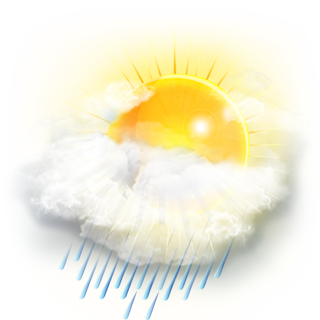Sometimes science can seem impossible to learn or can seem exceedingly boring. This past Monday, Mar. 3, chemistry was presented in a different kind of manner, with stock market jokes and tapas at Solea on Moody Street in town for the second annual installment of Cafe Science. The discussion, titled “Up-and-Down Chemistry: Oscillations, Chaos, Waves, and Patterns,” was led by Irv Epstein (CHEM), the Henry F. Fischbach Chair of Chemistry. Approximately 30 people attended the event, most of whom were faculty or adults.
Jim Haber (BIOL), who has been friends with Epstein since they were undergraduate students at Harvard University, introduced the presentation. Haber first organized Cafe Science in Spring 2012 after seeing a similar event at another university. He consults with faculty from the chemistry, physics, biology, neuroscience, psychology, math and computer science departments and organizes an annual schedule for the events.
Cafe Science is an organized effort to engage the local community in a conversation about cutting-edge scientific research and open to students and faculty alike. Presentation topics range from designing antibiotics, to neuroscience, to geometry. During this session, Epstein focused his discussion on chemical oscillation, which is defined as a periodic, or nearly periodic, variation of concentrations of one or chemical species in a reaction.
Epstein has taught at Brandeis for 43 years but had never presented his expertise at a tapas restaurant before. He began by describing chemical oscillation, and then gave a demonstration. He mixed together three clear solutions in a beaker, and within a minute, the solution mysteriously changed color from clear to light yellow to dark blue, and oscillated between these colors. Finally it settled to dark blue. He went on to explain that until the 1960s, most scientists did not think that these reactions were possible. He provided the audience with plenty of background information regarding the discovery of oscillation reactions, which were all stumbled upon accidentally.
Oscillation reactions were first discovered in the 17th century when the famous scientist Robert Boyle noticed flashes of light upon oxidizing phosphorus. Other scientists dallied in the field, but it was not viewed as legitimate in the world of science. A scientist introduced a model of oscillation, comparing fox and rabbit populations—the foxes eat the rabbits, the rabbit population declines, the fox population declines, the rabbit population increases again, and the cycle continues. This is comparable to the concentration of one chemical dwindling, the other increasing, and then oscillating until concentration equilibrium is reached (when the concentration of all of the chemicals is the same). Most scientists around the world, however, did not take this model seriously. In 1964, Russian scientist Anatol Zhabotinsky published a paper on the subject for the first time in history, and eventually came to Brandeis where the first chemical oscillator was designed in 1981. It created chemical oscillations that are deliberate rather than accidental, like those before it in history.
Epstein tried to comprehend what happens on a molecular level during chemical oscillations and what species must react to create them. However, according to him, this is no easy feat—there are many possible reactants, whose reactions can be converted into differential equations that you must integrate on a computer. In short, it’s a lot of complicated calculus.
Chemical oscillation has several very important implications, some of which can be seen in fields of medicine and technology. Coupled oscillators can be applied to the biomedical sciences in neuron signalling. A possibility on the technology frontier is the creation of “soft robots” from an oscillating catalyst gel; one concentration would shrink and the other would grow, causing the structure to crawl. Epstein’s lab has also done some work with chemical oscillators, creating erasable chemical memory.
“Chemical oscillations can cause beautiful patterns both in solution and on materials,” Epstein said. “I think to some extent, there is an aesthetic aspect that draws some of us to this field.”
In the future, Haber hopes to cultivate more interest in “what scientists do, what they think about and the exciting world-class research being conducted at Brandeis” in both the Brandeis and Waltham communities in a way that is “accessible and easy to understand.”
Cafe Science convenes on the first Monday of every month from 6 to 7 p.m., and costs $10 for admission and a drink.


